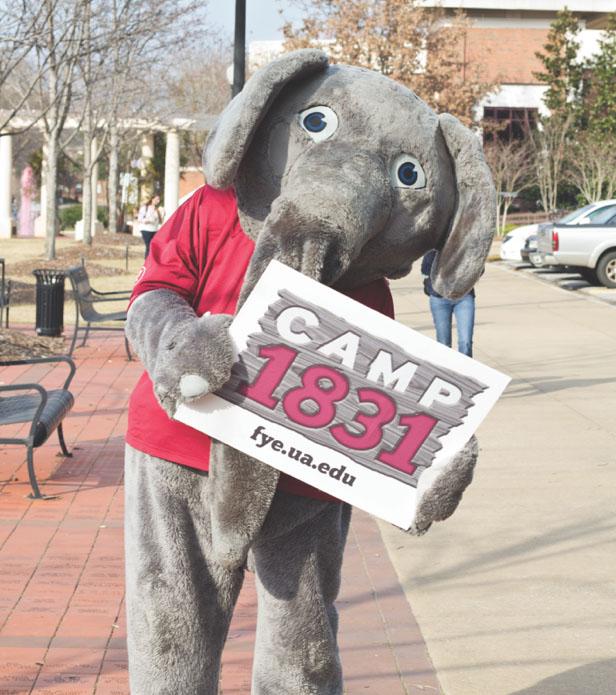This summer, many incoming freshmen’s first steps into The University of Alabama community took place more than 65 miles from campus.
In addition to the University’s regular schedule of Bama Bound summer orientation sessions for freshmen and transfer students, First Year Experience organized the inaugural Camp 1831 program, two separate three-day auxiliary orientation retreats held at Camp McDowell in Nauvoo, Ala.
Litsa Orban, assistant director of First Year Experience, said the new program was tasked with facilitating “a unique experience for first-year students to begin developing the groundwork of how they want to spend their time on campus as a UA student,” a mission she feels Camp 1831 successfully accomplished.
“[Attendees] networked with peers, faculty and staff and were introduced to the meaning of being a member of the Capstone before their first UA course,” she said in an emailed statement. “An exciting part for the FYE staff was watching the students return to campus from Camp 1831 with a new confidence and appreciation about being a UA student. Two nights and three days made an impact that will last a lifetime.”
Program facilitators aren’t alone in their positive assessment. Brandi Burks, a freshman majoring in nursing, participated in the camp’s second session Aug. 12-14, immediately following her Bama Bound program. She said the time spent at Camp McDowell proved a comfortable, more interactive supplement to Bama Bound orientation.
“I had a lot of fun at Camp 1831, and I would go back. Camp is different in that it helps you connect with freshmen or transfer students and hang out more, whereas Bama Bound was more just receiving information instead of mingling,” Burks said in an emailed statement. “I’m from Indiana, and I loved getting in contact with other students. It was nice to see how many other people were feeling the same as me and wanted to meet new people.”
Sara Hartley, executive director of First Year Experience, said the program’s trial run demonstrated more tangible measures of success as well.
“Our limit for each session was 150, but we ended up with approximately 75 per session,” she said in an emailed statement. “Compared to our benchmark programs, 150 students in the first year is at the high end of other institutions who do a similar program, so we expect that number to grow.”
Both Hartley and Orban said the less-than- projected attendance numbers proved an asset to Camp 1831’s operative goal.
“I really do believe this size worked well, and we were lucky to learn that in the first year,” Orban said. “The size allowed for the quality of the program to be even better than we imagined. Each participant was able to truly get to know one another, their A-Team members [upperclassmen camp leaders] and the faculty and staff.”
Burks said the camp maintained a busy schedule, with attendees often staying awake past midnight and resuming activities before 8:00 each morning.
“The first day we got there we were split up into ‘Small Groups’ made up of about 10 people or so. We discussed matters such as fears and excitements about camp, leadership and organizations that could help you get involved and even help the community,” she said.
Students also had opportunities to swim, hike, complete a rope obstacle course and eat dinner with professors and faculty members.
Hartley said the positive reactions to Camp 1831’s inaugural run merit FYE organizing additional programs in the future.
“FYE is committed to continuing Camp 1831 for many years to come. We believe that this will become part of the UA experience for many students,” she said.
Burks expects many students will take the opportunity to participate. When asked to reveal the details of a “symbolic” transition activity mentioned on the FYE website, she refused to give any information away.
“I know what the symbolic activity is,” she said. “But I’ll keep it a secret for future campers.”









